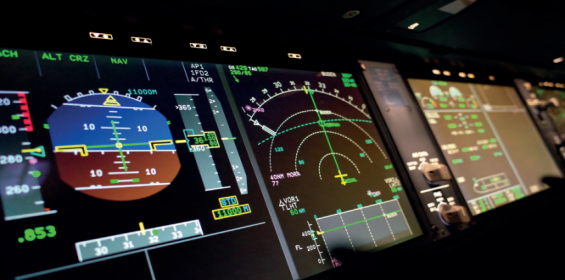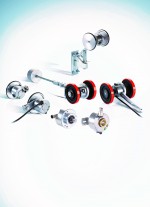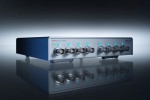Measuring vibration, linear and angular motion
Published: 17 October, 2023
Applications that require precise information on the linear or angular movement of an object rely on the accuracy of motion sensors within. Accelerometers and gyroscopes can be used to provide this movement data, and utilising developments in MEMS technologies means this is all possible within a much smaller space envelope. But as we push for increased functionality in smaller spaces, what can custom ICs do to benefit? Richard Mount, Director of Sales at ASIC design and supply company Swindon Silicon Systems explains.
In consumer devices, motion sensors offer an additional layer of functionality to provide a more user-friendly and immersive experience. They’re what allow game controllers to recognise tilting and rotational movements, as well as to register when you turn your phone sideways to watch a video or view a landscape image.
Accelerometers can recognise these movements by measuring proper acceleration, with both single and multi-axis accelerometers available to determine magnitude, direction and orientation. In the manufacturing plant, accelerometers may be deployed to perform a range of tasks, including tilt and inclination measurements and impact recognition and logging. It’s also possible to facilitate machinery health and condition-based monitoring (CBM) in this way, by converting acceleration into vibrational information. Misalignments or faults with shafts or bearings are likely to cause changes in vibration that can be picked up by the system. Therefore, combining strategically placed accelerometers around the plant with IoT technologies helps to enable predictive maintenance, by allowing the system to flag any potential issues before they become serious.
For information on angular velocity, it’s preferable to employ a gyroscope. Able to measure rotation around one, two or three axes, gyroscopes are commonly used in applications that require stability. This includes military applications to provide stabilised launch and landing platforms for unmanned aerial vehicles (UAVs), as well as aviation applications to monitor aircraft altitude. It’s also possible to combine accelerometers with gyroscopes for more accurate data on the object’s movement.
It’s clear that the applications of these motion sensors stretch far beyond consumer devices. Yet all these sensors must be able to perform these measurements with precision for meaningful results. So, what can we do to optimise their performance? First, let’s delve into the technology behind these sensing systems.
Building micro sensors
One of the most common accelerometers is the MEMS capacitive type. Offering low temperature sensitivity, they are ideal for industrial environments where conditions can be harsh and vary between extremes. They also offer good noise performance, low noise performance and a high sensitivity — all achieved within a compact package.
In simple terms, the MEMS capacitive sensor makes use of a single moveable mass, springs and fixed reference silicon substrates or electrodes. Movement of the mass relative to the fixed electrodes causes a change in capacitance. Because acceleration is related to change in capacitance of a moving mass, these capacitance values can be used to derive the mass’ displacement and its direction.
These accelerometers may be structured as either a single-sided or a differential pair. The single-sided is simpler in construction but provides an undesirable nonlinear output. To illustrate, let’s consider one mass and a single reference plate. As the mass moves, the capitative value changes with respect to the single reference plate. This can be an incredibly small value, which can be a challenge for systems to register.
Adding a second reference plate on the other side of the mass — known as a sandwich-type construction — means that when the mass moves, we can obtain two capacitance values instead of just one.
The additional measurements help to linearise the data, improving accelerometer precision as well as facilitating system calibration. Using more electrodes in parallel allows for greater capacitance changes, which again helps to boost sensor accuracy and makes this method of measurement more feasible. The analogue mass voltage will then go through charge amplification, signal conditioning and demodulation before conversion into a digital domain via an analogue-to-digital converter (ADC).
Optimising performance
Fault signatures with a small amplitude can be hard for systems to register. It’s therefore essential that the sensor can also operate with low noise and with sufficient resolution to isolate the low amplitude signals associated with these faults.
Achieving this is possible with bespoke electronics. Standard commercially available ICs may be able to perform the required signal conditioning and conversion of analogue voltage signals into digital ones that be communicated with external equipment. But for a more optimised solution, it may be preferable to opt for an Application Specific IC, or ASIC.
An ASIC is a bespoke chip designed specifically to meet its application to offer a superior overall solution. Freedom in design means that the ASIC can be designed to interface directly with the accelerometer sensor to provide sensor-specific conditioning, fine-tuned to meet the demands and requirements of the application.
An ASIC also comes with the benefit of obsolescence protection. Many defence and industrial applications require products with extended lifetimes and a guaranteed supply in times of need. Where standard ICs may be removed from production at any time and a manufacturer left stuck with a limited stock of LTB chips, a reputable ASIC designer will in contrast provide a full non-obsolescence plan. This includes choosing a suitable silicon process with the required longevity, as well as giving ample notice for a solution to be obtained depending on the manufacturer’s needs and product lifetime.
The applications of accelerometer and gyroscope technology reach far beyond our consumer devices. Yet whatever their final application, it’s crucial that they operate with precision every time. With a bespoke IC at their core, it’s possible to optimise these micro sensors down to the finest level for a performance superior to off the shelf alternatives.
For further information please visit: https://www.swindonsilicon.com/news/
https://twitter.com/swindonsilicon
https://www.linkedin.com/company/swindon-silicon-systems/






 SICK reports it has launched the DUS60 incremental encoder and DUV60 measuring wheel encoder with DIP switch programmability to provide users with a versatile and economical user-configurable motion control sensor.
SICK reports it has launched the DUS60 incremental encoder and DUV60 measuring wheel encoder with DIP switch programmability to provide users with a versatile and economical user-configurable motion control sensor. The new KISTLER LabAmp Type 5165A is said to be an outstanding amplifier designed specifically to combine impressive flexibility with convenient usability for the measurement of dynamic signals. Reported to be compatible with piezoelectric, Piezotron (IEPE) and voltage output sensors, the input signals can be routed to a choice of either 24-bit digitised data via Ethernet or analogue outputs.
The new KISTLER LabAmp Type 5165A is said to be an outstanding amplifier designed specifically to combine impressive flexibility with convenient usability for the measurement of dynamic signals. Reported to be compatible with piezoelectric, Piezotron (IEPE) and voltage output sensors, the input signals can be routed to a choice of either 24-bit digitised data via Ethernet or analogue outputs.
